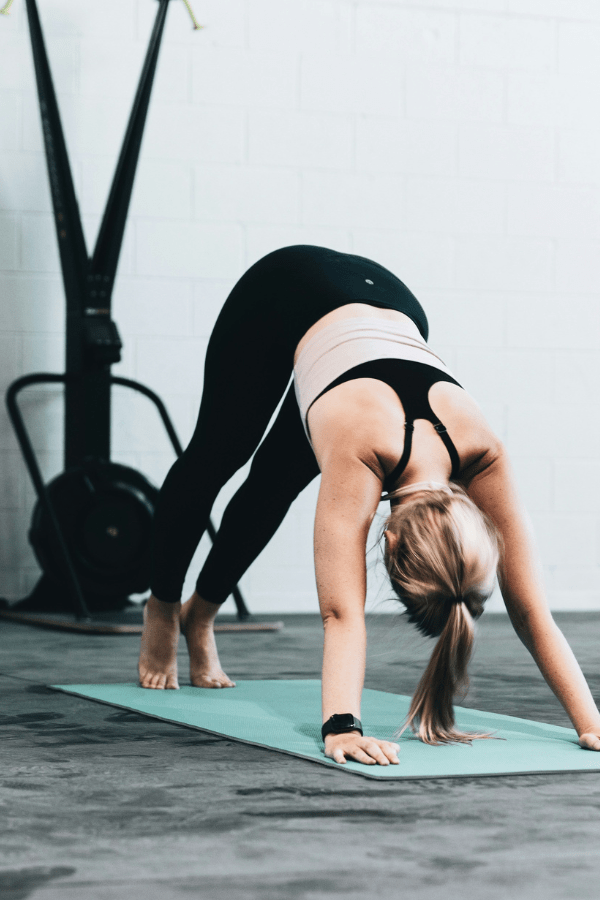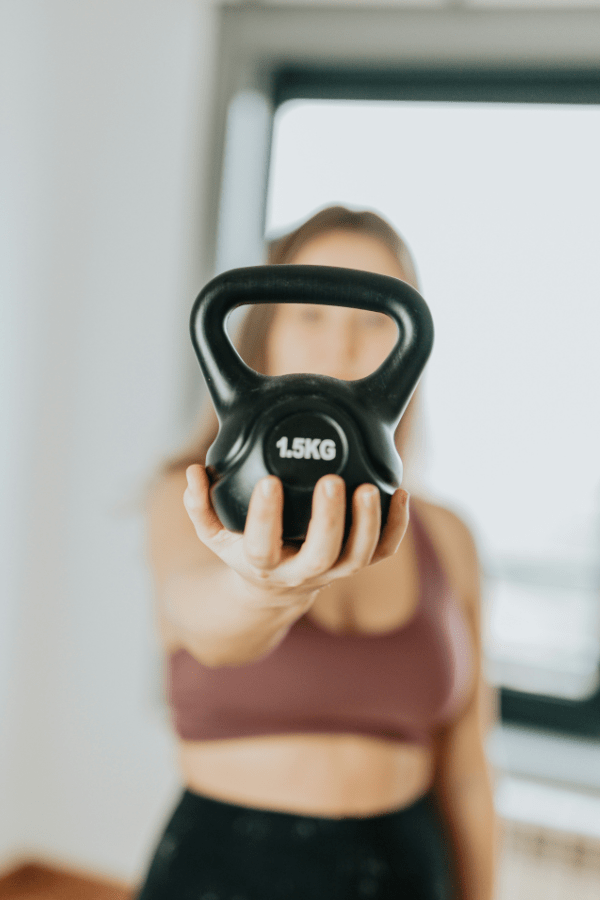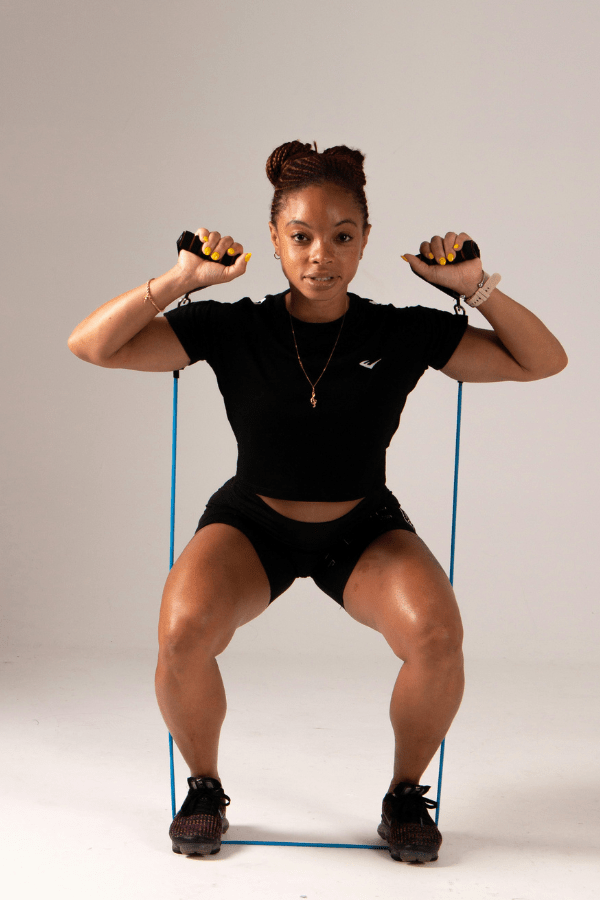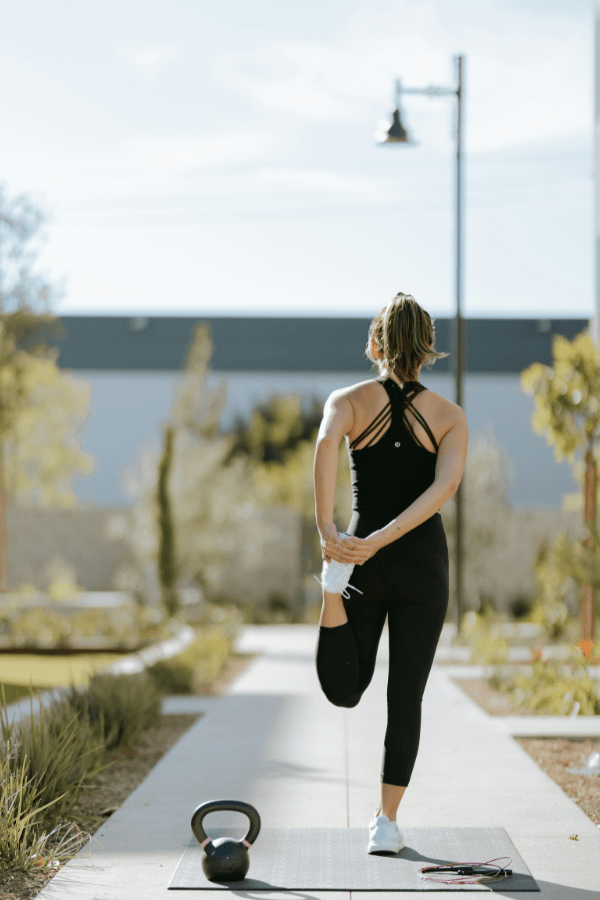
If you're looking to increase your overall strength, build muscle, or even target weight loss then weight training is essential.
As a beginner, it's easy to be overwhelmed by the array of exercises, machines, and advice out there. But don't worry I've been in your shoes!
I'm giving you 10 tips for beginners strength training, arming you with the knowledge and skills you need to take your fitness to the next level.
You'll learn about:
- the basics of strength training
- what resistance training can do for you
- how to start your own strength training program.
Everyone's fitness journey looks different. But with the right resources and commitment, anyone — yes, even beginners — can take advantage of strength training exercises and their many benefits.
So, let's get started and make strength workouts work for you!
Who is this blog post for? Those looking:
*Disclaimer: The suggestions provided in this blog post are for informational purposes only and should not be considered as a substitute for professional medical advice, diagnosis, or treatment. Always consult with a qualified healthcare provider before making any significant changes to your health and wellness routines. I am not a doctor and the information presented is based on research and personal experience. Individual results may vary, and any actions taken based on the information in this blog post are done at your own risk. It's essential to consult a healthcare expert for personalized guidance tailored to your specific health needs and circumstances. Your health and well-being should always be a top priority, and professional medical guidance is crucial for making informed decisions about your health.
Beginners Strength Training Tips:
Tip #1: Proper Form for Beginners Strength Training

Proper form is the foundation of effective beginners strength training.
What is "form"?
Correct form is the way you move your body during each exercise. It's about being in a good starting position, having the right posture, and doing the moves correctly to get the most out of your workout while also avoiding the risk of injury.
Listen to me on this.. you do not need to lift a single "heavy weight" until you nail down your form.
I promise you, you'll be able to squat deeper and lift heavier after you have good form. A solid foundation for protecting your back and joints will take you so much farther than getting to that heavier weight faster.
The key is to start slow, focus on how your body moves, and don't rush it. It's not about being perfect; it's about doing it right to keep the good vibes flowing and those muscles growing.
Tip #2: Learn How to Breathe Correctly

An often overlooked but crucial aspect of strength training as a beginner is your breathing technique.
While it may seem trivial, the way you breathe during your workouts can significantly impact your performance and the results you achieve.
By mastering the art of breathing, you can unlock your body's full potential and take your strength training to the next level.
How do you breathe correctly? Inhale through your nose at the beginning of each repetition of an exercise and exhale during the "lift" or exertion of force.
This way of breathing not only stabilizes your body for balance and control, it will help muscle oxygenation so you can push through fatigue. As well as provide clarity and focus.
Tip #3: Optimize Rest and Recovery

As you're getting your feet wet in beginners strength training, you're going to want to go all in because you have a fire lit under your butt, right? I know this feeling all too well!
I mean it's super exciting, so I know why you're ready to jump all in, but make sure you prioritize rest and recovery!
Your body needs to recharge and repair so rest is key to continuous progress.
My perfect rest/workout ratio recommendation? 4-5 days in the gym, 1 active recovery day (walking, yoga, stretching, etc.), and 1 day full of actual rest.
Yes, all my go-getters, this means doing no physical strain on your body. I know it's hard because you feel like you're doing nothing, but this is actually one of the most important days of your workout split.
Why are rest days so important?
By prioritizing recovery and rest, you're preventing overuse and injury, which is one of the most common ways people get injuries.
When you're lifting weights and putting stress on your muscles, small micro tears occur. (Don't worry, this is a great thing!)
When you "rest" and get adequate protein intake, your muscles repair, rebuild, and grow stronger. This allows you to gain strength and increase the size of your muscles.
Recommended post:
75 Super Simple Self Care Tips for Busy Women
Tip #4: Target Major Muscles

To achieve a balanced and stronger body, you must target major muscles such as the biceps, triceps, deltoids, latissimus dorsi (lats), abdominal muscles, quadriceps, hamstrings, and calves.
While many smaller muscles also play a role in function and physique, targeting these main muscle groups will help you achieve that well-rounded "fit " physique.
Focusing on one or a few major muscle groups instead of ALL of them, will not only make you look imbalanced, but it leads to actual muscle imbalances and potential injuries.
Muscle imbalances occur when certain muscles are stronger and more developed than opposing muscle groups.
Your body will compensate the weaker areas with poor form while activating the wrong muscle groups.
This, in combination with the lack of muscle-to-mind connection*, will lead to injury at some point.
Listen when I say, focus on full body as well as targeted splits* and you'll enhance your overall power, strength, and coordination.
*muscle-to-mind connection: when you think about the muscle you're using as you're working it
*targeted splits are days you strategically split muscle groups. Ex: back and biceps, chest and triceps, legs and butt, etc.
Tip #5: Progressive Overload

Progressive overload is a foundational principle in strength training that involves gradually increasing the challenge you put on your muscles over time. It's all about constantly pushing your limits and consistently challenging your body to adapt and grow stronger.
When you consistently overload your muscles (whether by increasing the weight you lift, the number of repetitions you perform, or the intensity of your workouts) your body responds by building more muscle mass and becoming stronger.
Progressive overload helps you avoid hitting a plateau, providing continual progress.
It's important to remember that progressive overload doesn't mean constantly lifting heavy weights or pushing yourself to the brink of exhaustion every single workout.
It's about finding the right balance and incrementally increasing the demand on your muscles to stimulate growth without risking injury or burnout.
Progressive overload is a long-term strategy. It's not about making immense changes overnight, but small incremental adjustments over time.
Tip #6: Compound Exercises

Unlike isolation movements that target individual muscles (i.e. bicep curls, hamstring curls, tricep extensions, etc...) compound movement involves multi-joint exercises that engage many muscle groups at once.
You'll get the most out of your workout time and stimulate more muscle fibers by incorporating compound exercises into your routine.
One of the things I love most about compound exercises is that they mimic real-life movements.
When you perform compound exercises such as squats, deadlifts, lunges and push-ups, you engage multiple joints and muscle groups, just as you would during activities in your daily life or sports.
This functional aspect of compound exercises not only helps you build strength but also enhances your overall physical performance and reduces the risk of injuries.
You'll often hear this referred to as, "functional exercise".
Compound exercises allow you to lift heavier weights compared to isolation exercises.
Since you're utilizing several muscle groups simultaneously, you can lift more weight and experience a greater overall load on your body.
This increased intensity not only promotes muscle growth but also stimulates the release of growth hormone, which further supports muscle development and improves your body composition.
Both isolation exercises and compound exercises have vital roles in a fitness program.
But in the beginning stages of your beginner strength training, compound movements establish a strong foundation of strength. This foundation will allow you to set yourself up for success in the long run.
Tip #7: Bodyweight Exercises

Bodyweight exercises allow you to unlock your body’s own strength. They are a great way to build strength and improve your overall fitness, as a beginner, without having to use additional weight.
Body weight workouts are just what they sound like. They use your own bodyweight as resistance during each movement.
The great thing about bodyweight movements is that you can work multiple muscle groups while improving your balance, coordination, and muscular endurance.
Another benefit of bodyweight strength training is that it's extremely convenient.
Bodyweight training can be done pretty much anywhere, at any time with or without a gym and equipment.
There are plenty of variations and progressions available to challenge your muscles and keep your workouts effective.
For example, if you're new to bodyweight exercises, you can begin with basic movements like a bodyweight squat, a reverse lunge, and even push-ups on your knees.
As you get stronger, you can advance to more challenging variations like pistol squats, handstand push-ups, and plyometric lunges.
Recommended post:
More Posts Coming Soon!
Join the Squad so you don't miss out on Awesome Weekly Posts
Tip #8: Incorporate Resistance Bands

Adding a set of resistance bands to your strength training journey creates variety and adds additional resistance to your workouts. Ultimately giving you better results.
These bands are so versatile and a great tool for building lean muscle.
Resistance bands consist of materials such as elastic or a stretchy fabric.
Many resistance workout bands have different levels of "stretchiness" for customizable tension. Low, moderate, and heavy are the most common descriptions.
Resistance bands also provide a different type of resistance compared to free weights or machines.
The tension created by the bands throughout the entire range of motion engages your muscles differently, helping you develop strength and stability.
Additionally, resistance bands allow for a greater range of motion, enabling you to work muscles from different angles and improve your overall flexibility.
They are lightweight and compact, making them perfect for home workouts, travel, or even incorporating into your gym routine.
You can easily pack them in your bag or store them at home, ensuring you always have access to an effective strength training tool.
Tip #9: Understand Your Fitness Level

To fully maximize your gains in strength training, it's crucial to tailor your routine to your fitness level.
By understanding where you currently stand, you can customize your workouts to meet your specific needs and goals.
When customizing your fitness routine, consider:
- your current level of strength and endurance
- past injuries and/or limitations
- your overall fitness goals
This awareness will help you create a program that challenges and promotes progress without risking injury or overexertion.
Start with the basics in beginner strength training programs and gradually advance your techniques the more you progress.
Tip #10: Fuel Your Body

This might possibly be the most important section! Proper nutrition plays a fundamental role in strength training. To maximize your strength gains and achieve your desired results, it's essential to fuel your body with the right balance of nutrients.
First and foremost, it's important to focus on consuming an adequate amount of calories.
Strength training requires energy and by ensuring you're consuming enough calories, you can provide your body with the fuel it needs to support your workouts and recover effectively.
NEVER go under 1,200 calories a day. Your metabolism will take a hit and you could risk further progress.
Focus on getting in adequate protein intake as well as carbohydrates and fats.
Proteins are the building blocks of muscle. Aim for 1g of protein per 1 pound of your goal body weight.
If your current weight is quite a bit higher than your goal weight, you'll need to increase your protein intake.
Carbohydrates are another essential nutrient for strength training. They provide the energy needed to power through intense workouts and maximize performance.
Opt for complex carbohydrates like whole grains, fruits, vegetables, and legumes, as they offer a steady release of energy and are packed with essential vitamins, minerals, and fiber.
Don't overlook the importance of healthy fats in your diet, because they are crucial for hormone production and overall well-being. Include sources of healthy fats like avocados, nuts, seeds, and olive oil to support optimal performance and aid in nutrient absorption.
The last but seriously most important nutrition factor for fueling your body is HYDRATION. Hydration is often underestimated but is vital for strength training success.
Aim to drink enough water throughout the day to stay properly hydrated, as water is essential for optimal muscle function, joint lubrication, and overall performance. Remember to hydrate before, during, and after your workouts to replenish fluids lost through perspiration.
Liquid IV or a similar electrolyte supplement is great for replenishing those lost fluids!
These 10 beginners strength training tips are the secret weapons that will propel you towards your fitness goals through your workout routine.
A quick recap of the benefits of beginners strength training:
- By focusing on proper form, breathing techniques, and rest and recovery, you build a solid foundation for success.
- Targeting major muscle groups, progressively overloading, and incorporating compound exercises will challenge your body and create sculpted results.
- Don't underestimate the power of bodyweight exercises and resistance bands, as they unlock your strength and add variety to your routine.
- Remember to always consider your fitness level and fuel your body with proper nutrition.
With these tips in your arsenal, you are equipped to maximize your gains and achieve the results you desire. So, embrace the challenge, put these tips into action, and get ready to take your fitness to new heights.
As Arnold Schwarzenegger once said, "Strength does not come from winning. Your struggles develop your strengths."
xoxo,





Leave a Reply